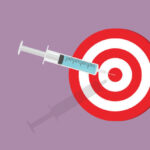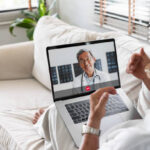The demand for healthcare professionals has reached critical levels, accentuating the need for innovative solutions. Amidst this, remote patient monitoring (RPM) nurse workflows emerge as transformative assets for medical teams grappling with shortages of healthcare professionals. This article delves into the pivotal role of remote patient monitoring nurse workflows and technology in bridging the gap exacerbated by professional medical shortages, all while enhancing the overall efficiency of healthcare delivery.
The State of the Nursing Workforce
The nursing and healthcare staffing challenges were further intensified during and after the COVID-19 pandemic, with demand for nurses exceeding supply in almost all regions in the United States. Nevertheless, even before the pandemic, healthcare experts had predicted a substantial nursing shortage, which has worsened the already precarious situation. The National Library of Medicine reported in February 2023 that the average nurse turnover rate across the country ranged from 8.8% to 37%, depending on the nursing specialty and geographic location. Indeed, some states are harder hit by nursing shortages. For instance, a study by three healthcare organizations warns that Nebraska is at risk of facing a shortage of 5,435 nurses by 2025.
The report highlights burnout, an aging nursing population, and inadequate funding for training as contributing factors to the difficulty of filling positions. This shortage poses a concern for patient care and underscores the urgent need for state investment in education, recruitment, and retention efforts. In addition, according to the report, there will be significant changes in healthcare delivery involving adopting telemedicine options on a large scale.
The Growth of Remote Patient Monitoring
The COVID-19 pandemic has led to a surge in the adoption of patient-care technologies, including remote patient monitoring by health systems and hospitals nationwide. This has enabled the expansion of healthcare resources from care centers to patients’ homes, with RPM used to manage chronic and acute conditions like kidney disease, COPD, and heart failure.
Healthcare organizations can receive Medicare reimbursement by outsourcing RPM services. Companies such as Tenovi specialize in providing RPM software and services to chronic care, telehealth, and remote monitoring companies that wish to offer RPM solutions to healthcare providers.
RPM reimbursement codes enable healthcare organizations to outsource services to third-party remote monitoring companies that can provide device setup, education, and data review. This allows qualified healthcare professionals to focus more on patient care and less on administrative tasks.
Evidence-Based Research Nurses in RPM
According to a recent study, NICU nurses reported that physicians were easily accessible and adequately supported nurses and patients. They also reported having enough time to ask questions and access the resources needed for patient care.
In another case study, an RPM department managed over 1200 patients across 18 remote patient monitoring programs with the help of a centralized nursing team. The team reviewed health data continuously and maintained regular communication between patients/caregivers and physicians, allowing real-time treatment plan adjustments.
This workflow structure enabled two monitoring nurses to focus solely on patient management, improving safety and communication while providing ample time for patient care. Patient and caregiver satisfaction ratings remained high, partly due to their encouragement to send free texts with ideas for improvement.
RPM and the Benefits for Nurses
Remote patient monitoring technology is changing how nurses work, providing new tools and capabilities to improve patient care. By leveraging RPM systems, a remote patient monitoring nurse can monitor patients’ vital signs and other health indicators remotely, quickly detecting potential issues and intervening before they become serious problems.
In addition, remote patient monitoring nurse workflows offer several benefits for medical teams. This can save nurses time and resources, allowing them to focus on other aspects of patient care, such as providing patient support and education.
Increased Workflow Efficiency
First, automated data collection means that nurses no longer have to manually record and track patient data, saving time and reducing potential errors. In addition, RPM systems can alert a remote patient monitoring nurse if patient data falls outside of a specified range, reducing the need for nurses to check and monitor data continuously.
Second, RPM technology can enhance communication between patients and healthcare providers, reducing the need for time-consuming face-to-face visits. Patients can communicate with nurses and physicians remotely, using messaging systems or video conferencing. This allows for faster response times, improved patient outcomes, and increased workflow efficiency for nurses.
Enhanced Patient Results
RPM workflows can help a remote patient monitoring nurse identify health issues early, allowing prompt intervention and improving patient outcomes. For example, monitoring vital signs remotely can help nurses quickly detect changes in patient conditions for timely medical attention.
Better Use of Resources
By leveraging RPM technology, a new, more streamlined workflow can help healthcare organizations optimize their resources by enabling a remote patient monitoring nurse to monitor multiple patients remotely. This can help reduce nurses’ workload and improve patient care access. Additionally, RPM helps prevent costly hospitalizations and emergency room visits, which can strain healthcare resources. As healthcare systems evolve, adopting remote patient monitoring technology is expected to play an increasingly significant role in delivering high-quality patient care while optimizing healthcare resources.
Remote patient monitoring vendors reduce the workload of healthcare providers and staff. Outsourcing also provides access to specialized expertise and resources that the healthcare organization may not have in-house, such as advanced analytics and data management capabilities.
Enhanced Communication
RPM workflows can improve communication between patients, caregivers, and healthcare providers. For example, a remote patient monitoring nurse can communicate with patients more frequently through remote channels such as video conferencing, phone calls, or messaging systems, ensuring patients understand how to use the RPM devices correctly and providing ongoing support.
Improved Job Satisfaction
Remote patient monitoring nurse workflows can help nurses feel more fulfilled by giving them more time to focus on patient care and reducing the burden of administrative tasks by automating data collection, analysis, and report generation. This can improve job satisfaction and reduce burnout rates among nurses.
Key Points: Remote Patient Monitoring For Nurses
In summary, remote patient monitoring technology can increase workflow efficiency for nurses by reducing the workload associated with patient monitoring, automating data collection and analysis, and enhancing communication between patients and healthcare providers. These benefits ultimately improve patient care and outcomes, allowing nurses to focus on other critical aspects of their work.
Visit Tenovi to review our FDA-cleared RPM devices for healthcare teams. Our platform caters to a broad range of remote patient monitoring companies, and we offer a free demo to showcase our services. Join the Tenovi community today and elevate your RPM experience.






